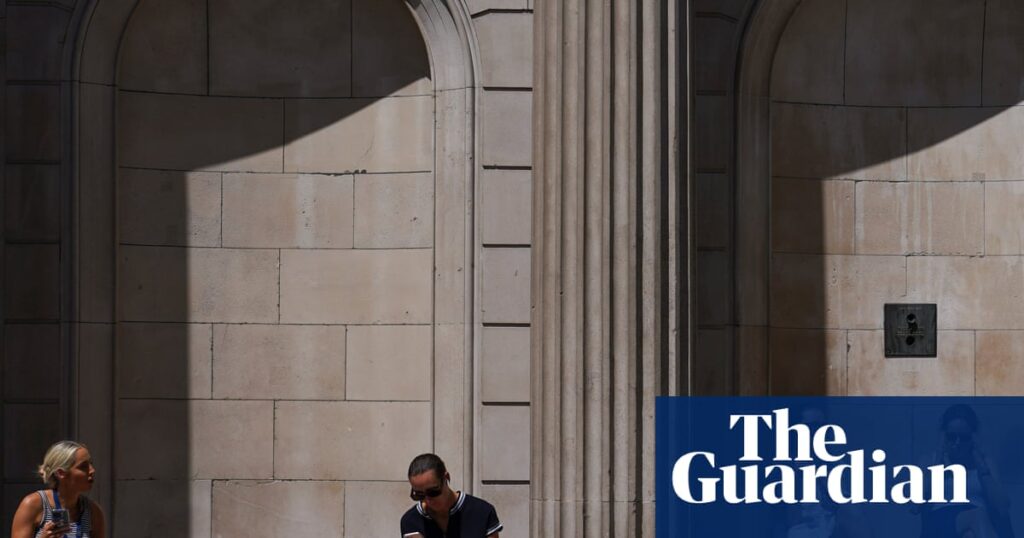The Bank of England has warned that soaring food prices could drive inflation to 4% as it voted for a fifth cut in interest rates in a year, amid mounting concerns over the strength of the UK economy.
In one of its closest decisions since its independence more than 25 years ago, the Bank’s monetary policy committee (MPC) voted by 5-4 to cut its key base rate by a quarter-point to 4%.
Taking borrowing costs to the lowest level since March 2023, a cut was widely expected in financial markets. However, the decision was a close call, with the rate-setting panel for the first time in history holding two votes before reaching its verdict.
Andrew Bailey, the Bank’s governor, said: “We’ve cut interest rates today, but it was a finely balanced decision. Interest rates are still on a downward path, but any future rate cuts will need to be made gradually and carefully.”
The chancellor, Rachel Reeves, will welcome the cut as Labour comes under heightened pressure over its economic management and speculation over tax rises in her autumn budget, and the cut will ease some of the financial pressure on borrowers.
Ministers have sought to claim credit for the Bank cutting rates since the first reduction in borrowing costs, in August last year, from a peak of 5.25%. Helping to ease some of the financial burden on mortgage borrowers, the Bank last cut borrowing costs in May.
However, critics say tax rises in Reeves’s first autumn budget have worsened Britain’s economic performance, adding to pressure on businesses amid heightened uncertainty from Donald Trump’s global trade war.
Threadneedle Street said that while the economy remained weak and unemployment was rising, there were also mounting inflationary pressures hitting households from a sharp rise in the price of food. Trade uncertainty was also weighing heavily on the outlook.
Publishing updated forecasts, it said inflation was now on track to reach 4% by September – twice its official target set by the government. The headline rate is then forecast to fall back to below 3% by summer 2026, and would take until 2027 to return to target.
The MPC warned that food price inflation was adding to the headline rate in particular, driven by climate-induced shocks affecting the global price for several key ingredients, including chocolate and coffee.
However, at the same time, it said UK supermarkets were also likely putting up grocery prices in response to a “material” rises in employment costs and new charges for recycling packaging, which were both driven by the government.
“In addition to global agricultural commodity prices, domestic labour costs are currently an important driver of food price inflation,” the Bank said.
Business leaders had warned that Reeves’s £25bn increase in employer national insurance contributions (NICs) and a 6.7% rise in the national living wage from April would force them to cut jobs and put up prices.
after newsletter promotion
Official figures show unemployment has crept higher in recent months, while the economy shrank in April and May. Inflation has also risen by more than expected, reaching 3.6% in June.
Facing double-sided risk to the British economy from weak growth yet mounting inflationary pressures, the split decision in favour of cutting rates on the Bank’s MPC was swung by the external economist Alan Taylor.
The independent MPC member, who has repeatedly backed deeper cuts in borrowing costs, had first voted for a half-point reduction before joining the narrow majority supporting a quarter-point cut – including Bailey.
Exposing tensions at the heart of Threadneedle Street, the four other members – including the Bank’s chief economist, Huw Pill, and one of its deputy governors, Clare Lombardelli – voted to keep interest rates unchanged.
Inflation has fallen back substantially in the past two and a half years from a peak of more than 11% in late 2022 after Russia’s invasion of Ukraine. That progress has allowed for the Bank to cut rates. However, it said lingering inflationary pressures could derail future rate cuts.
“The MPC judges that the upside risks around medium-term inflationary pressures have moved slightly higher since May,” it said.


